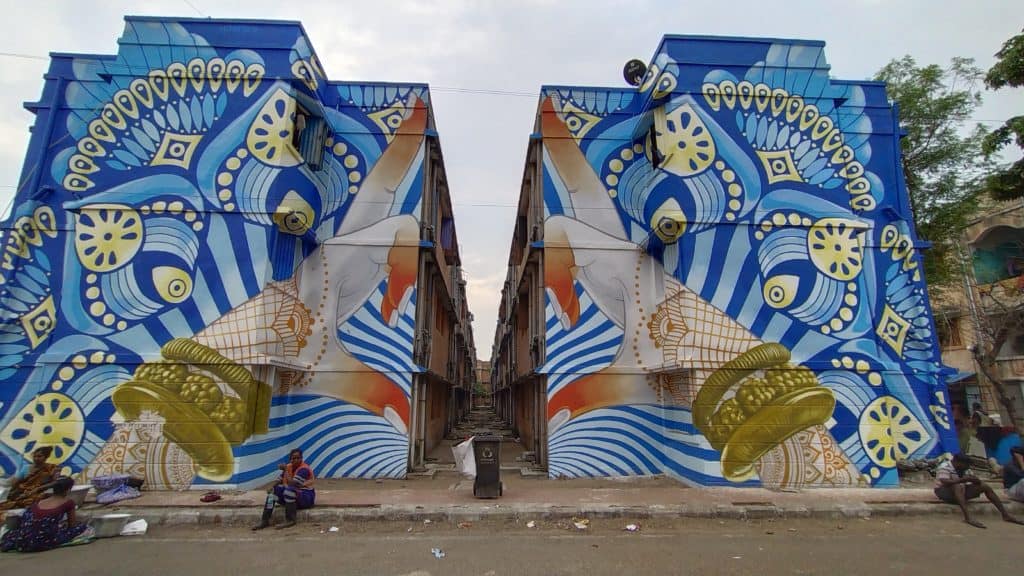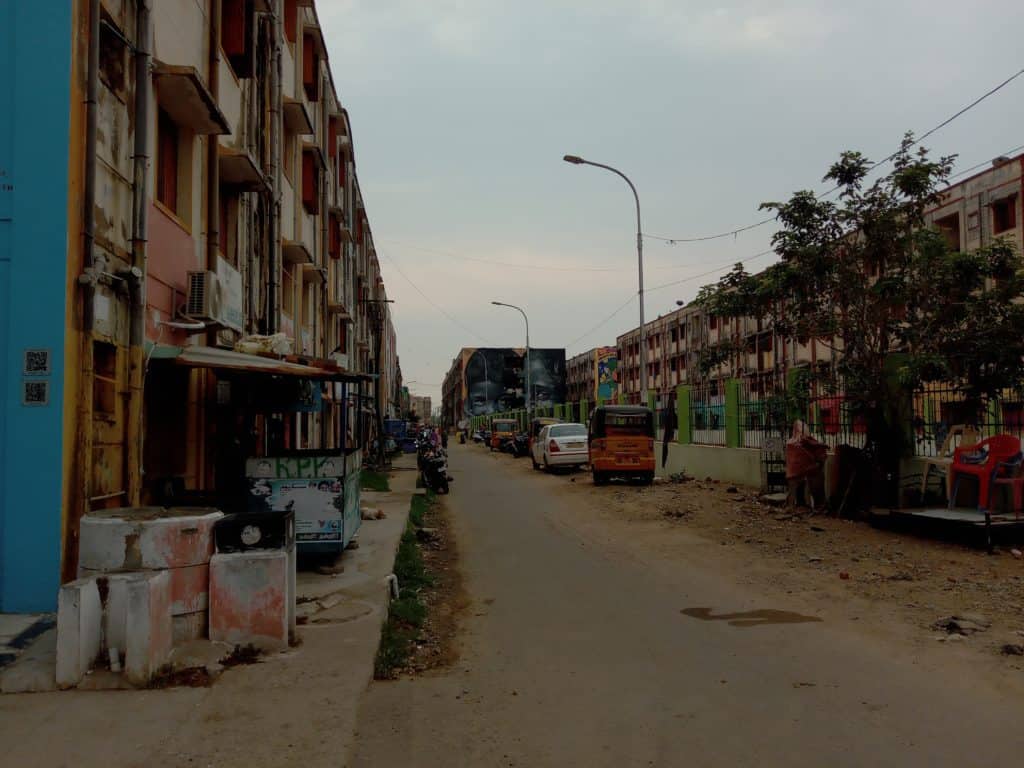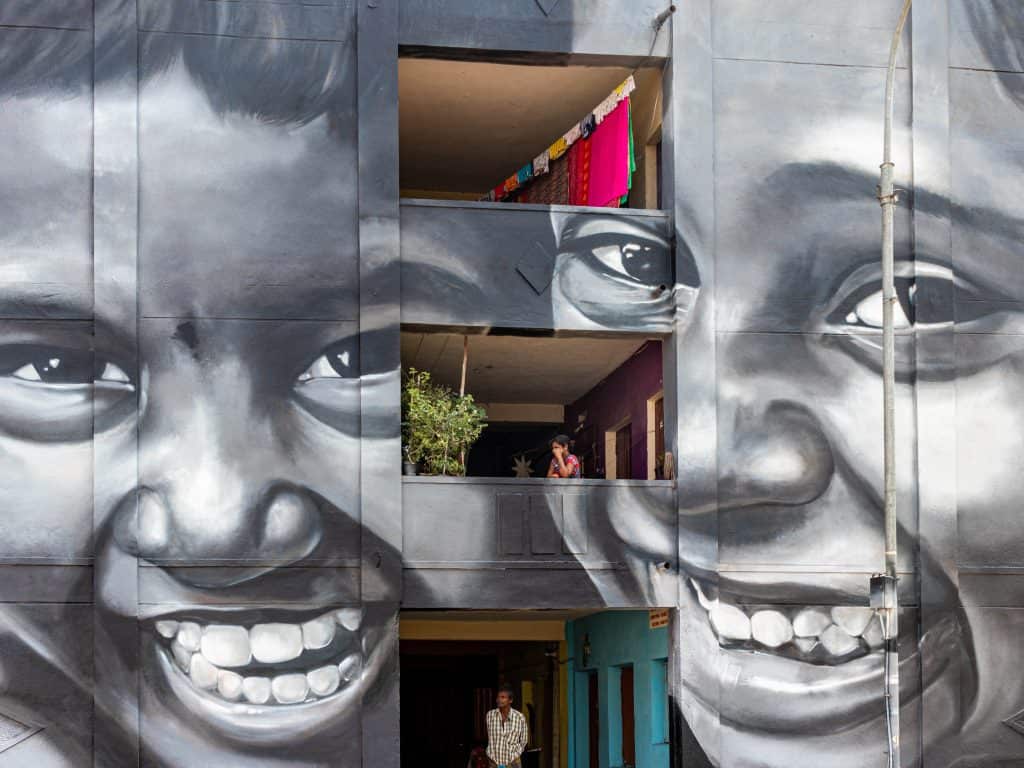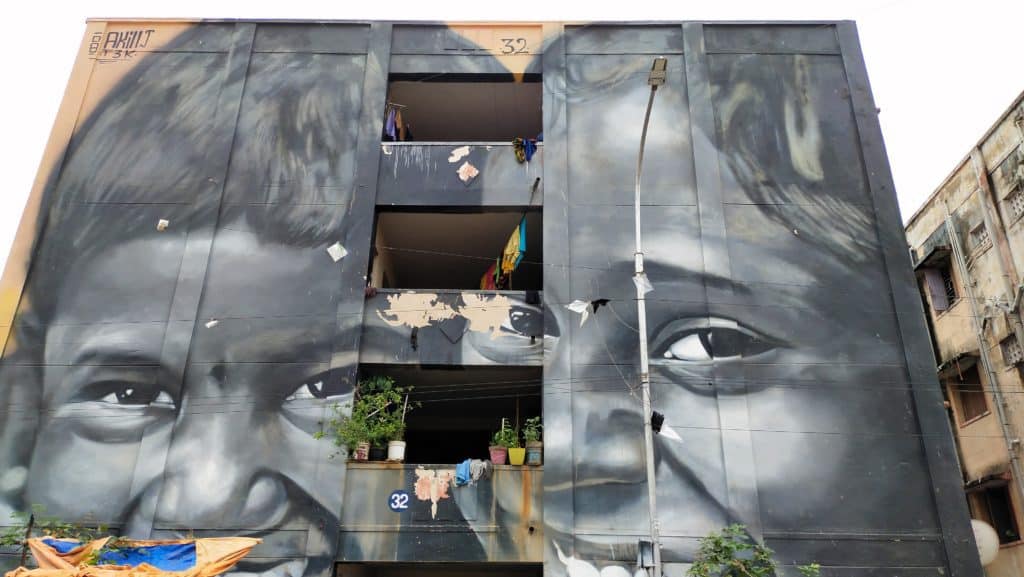In the early hours of Sunday, a group of photographers were seen walking through the streets of Kannagi Nagar. This was an uncommon sight in the otherwise neglected resettlement colony located in the outskirts of the city.
“It is a good spot to explore street photography,” said K Aishwarya, a resident of Anna Nagar who visited Kannagi Nagar for the first time as part of the photo walk.
So, what made Kannagi Nagar a sudden spot of attraction for these photographers? The answer lies in the colourful murals that adorn the walls of what has been dubbed as Chennai’s first ‘Art District’.
Kannagi Nagar as an art disctrict
Kannagi Nagar has over 23,000 tenements which is home to many families that were resettled there post the tsunami of 2004 and various other eviction drives that were carried out along the water bodies of the city.
The idea of creating an art district in Kannagi Nagar came about pre-pandemic, in 2020. Supported by Chennai Corporation and Tamil Nadu Urban Habitat Development Board and in association with Asian Paints, St+art India, a not-for-profit organisation founded in 2014, painted the walls of Kannagi Nagar with sky-high murals.
The painting project has seen three editions so far, with each one adding more murals to the landscape of Kannagi Nagar. The latest edition saw the creation of six new paintings in the area.

Read more: Kannagi Nagar all set to become Chennai’s walk-in art gallery, open to all!
What the murals have brought to Kannagi Nagar
A Mary, like many others in Kannagi Nagar, used to earn her means from makeshift food stalls near her erstwhile residence in Santhome Church locality. “We were given food carts to set up shops before Tsunami hit our houses. We neither have such benefits here nor do we have an infrastructure to earn from such shops within the colony,” she said.
But her feelings about the mural remained positive.
“Ever since we were relocated to Kannagi Nagar after the 2004 Tsunami, we have been living in isolation losing all our connections with our native land. Before the outbreak of pandemic, 16 facades were painted. After the lockdown norms were relaxed, many people from the city, for the first time in decades, have started coming to our locality,” says A Mary, on many arriving to take a look at the murals.
S Kannagi, who runs makeshift snacks shop at the junction of a mural depicting an imaginative space that serves as a gateway to bright and hopeful tomorrow, believes that the project is done for the welfare of the residents. She had to shut down her shop for a month time, for the painting works to be carried out. “I managed the household expenses with the earnings of my son who is an auto driver. I do not regret shutting the shop as the painting was necessary and the artists were doing it for our welfare. Many children come to the junction to play and take photos now,” she said.
Another resident, B Krishna, observed that since the walls were painted, people have stopped spitting or urinating on those walls. “Exposure to such kind of art works has also induced curiosity into painting among the children and has set a better inspiration for them.”
Reality of life in Kannagi Nagar
Despite living there for nearly two decades, the residents of the area suffer from a lack of basic civic amenities and access to transport, education and means to earn a livelihood.
A group of men living in the three storey apartments echoed that though the metro water supply was regular, the buildings lacked inbuilt tank facilities, which force them to handpump the water on every alternative day. “We end up with pain in shoulder and chest,” they said, adding that the buildings were in a dilapidated condition that even a short spell of rain could lead to water leakage inside the houses. “The amount spent on paintings could rather be spent on repairing the buildings, fixing motors and setting up overhead tanks,” they added.

While projects such as the art district bring some positivity to the community, the problems that need to be addressed run deeper. Krishna points out that the unemployment rate remains the same in Kannagar Nagar as many years ago and that the locality also needs a facelift in basic amenities.
“Though the walls are painted for an outward beauty, it does not change the quality of those buildings inside the apartments,” added Aishwarya. Pointing out to one such painting, she said, “the building obviously looks different at the face of new paintings but it is still in a dilapidated condition and could collapse at any moment. Though it is a good initiative, the government should prioritise improving basic infrastructure and ensure safety.”
Pointing out the glaring gaps in terms of infrastructure, access to services and social mobility, Vanessa Peter, Founder of Information and Resource Centre for the Deprived Urban Communities, suggested that setting up model blocks like child labour-free block or unemployment-free block, in addition to the art district project, would contribute to the entire development of the community.
“We do support the project for it partially erases such stigma. However, the art district being a standalone project could not be a solution to the problems faced by residents. Of the entire Smart City programme, the only project that benefits the settlements is this one. It shows the lack of clarity on urban vulnerability. We would have been happier, if ‘Art district’ was a part of a larger comprehensive project,” she said.
Read more: Residents of Chennai’s resettlement sites fight against all odds to receive their pension
Involvement of local residents and upkeep necessary
While few residents were critical about the selection of walls for painting, which were hidden between the buildings, they collectively echoed that they only saw colours, which was a delight to the eyes but were not able to understand the story or meaning behind the artworks.
P Ashok Kumar, a former boarding artist from the settlement area, suggested that the use of local artists for such projects could have been a better engagement for the community on the whole. He also added that the respective artists could have explained the cultural relevance of their works to the residents, as many see them as mere colours.
An iconic picture of two smiling children in black and white with a yellow background caught the attention of many during the first edition of the project in early 2020. With the vibrance of the mural wearing off, paints were also seen to be torn off in parts of the walls and the yellow background was completely washed away. This calls for an attention towards the maintenance of such works, the residents mentioned.


Further upgrades and a vision for the future
Commenting on the Art District project, Regional Deputy Commissioner (South) of GCC, Simranjeet Singh Kahlon, said that it was being done in continuation of the earlier editions. “We wanted to make it an identity for the community who live in the area and this would feel proud of the place where they reside. Awareness and cultural programmes were also conducted to engage the community as part of the project.”
Speaking on the maintanence of the paintings from earlier editions which are seen to be ripped off in a couple of years, he said that either the same paintings would be repainted or a new painting would come up in the same wall from a different artist in the upcoming editions of the project.
Apart from Art District project, the GCC is also planning to bring up a playground opposite to the police station and a badminton court or a volleyball court in one of the vacant grounds. “Works are underway for it,” he added.
Commenting on the infrastructural projects to be carried out in Kannagi Nagar, an official from the Tamil Nadu Urban Habitat Development Board said that a sum of Rs 19 crore has been sanctioned for refurbishment works in Kannagi Nagar. This is in addition to an allocation of Rs 10 crore for repair and renovation works in all settlement areas including Kannagi Nagar.
“We are soon to carry out the renovation works, repair the leaks in sewerage and water pipelines, replace the damaged tanks and paint all the blocks. The buildings will have a facelift in terms of infrastructure,” said the official.